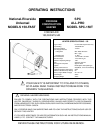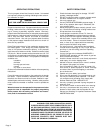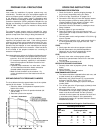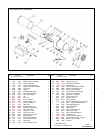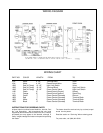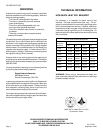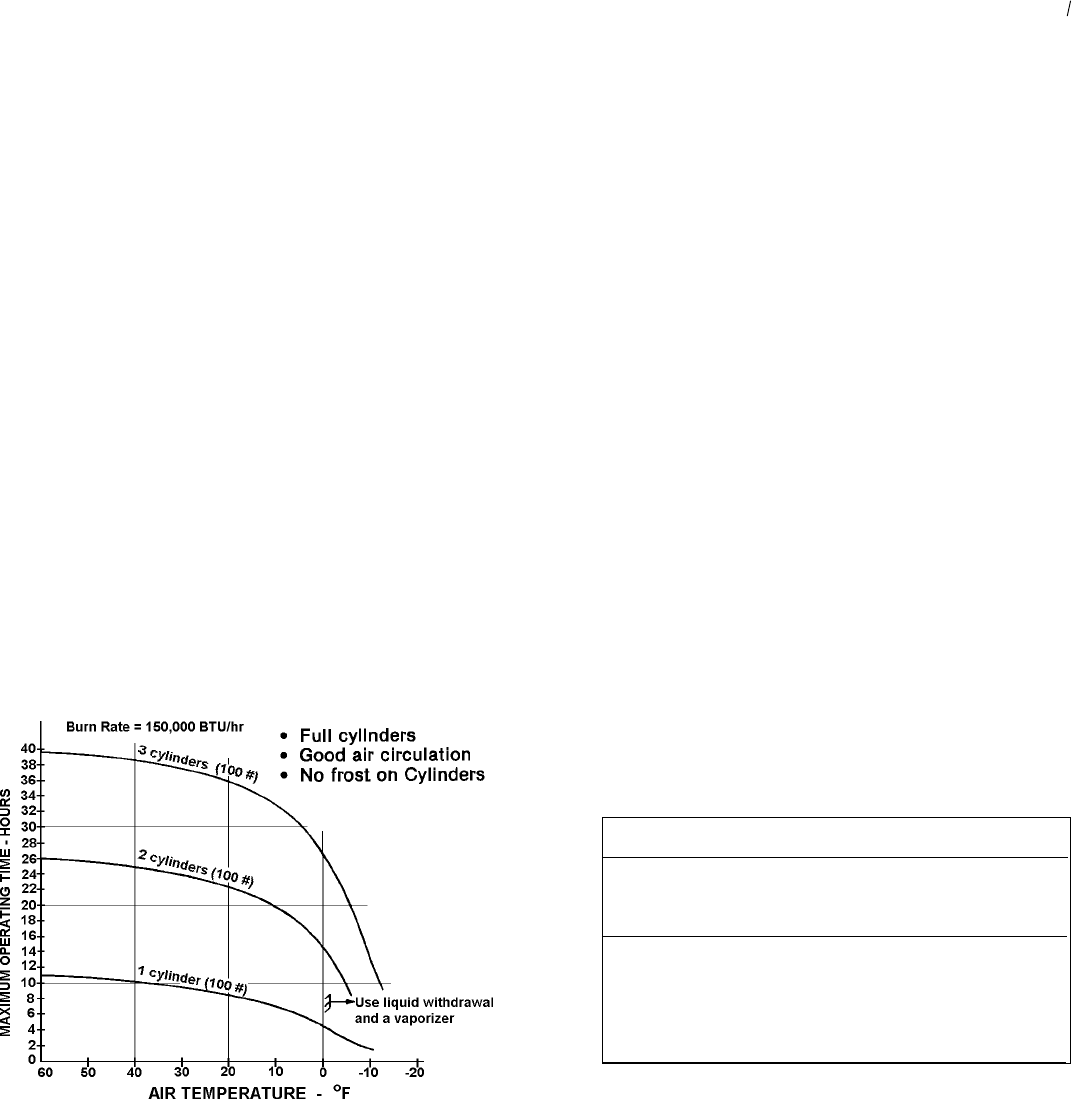
PROPANE FUEL PRECAUTIONS
WARNING:
Local codes for installation of propane systems may vary
considerably. Therefore, ask your local propane supplier for
advice on propane system installation in your particular area.
In the absence of local codes, install in accordance with
American National Standards Institute (ANSI)/National Fire
Protection Association (NFPA) publication Standard for the
Storage and Handling of Liquefied Petroleum Gases ANSI/
NFPA 58-1998. Your supplier, fire marshal or library should
have a copy.
The propane supply system must be arranged for vapor
withdrawal. Propane cylinders must be secured in the upright
position to keep them from falling or being knocked over.
During use, liquid propane in a container vaporizes. As it
vaporizes, the propane cools itself. If this cooling process
continues long enough and proceeds fast enough, the pro-
pane temperature and pressure will fall so low that heater
operation may be improper or even impossible even though
plenty of propane remains in the container. Often frost forms
on the outside of the propane container as a warning of
excessive refrigeration.
Recommendations to reduce the ill effects of refrigeration are:
* Provide considerably more propane than you plan to
consume. As a rule of thumb, provide twice as much.
* Fill containers frequently, especially in cold weather.
Never allow propane to fall below one-third of con-
tainer capacity.
* If possible, keep containers in a warm area. Under
no circumstances should the heater exhaust be
directed toward the propane container.
* Watch for frost formation on the container. If it
occurs, discontinue use of the heater and refill the
container.
SIZE AND CAPACITY OF PROPANE CYLINDERS
The chart below shows the approximate size of the cylinder
OPERATING INSTRUCTIONS
Wire Gauge Chart A.W.G.
PREPARING FOR OPERATION
1. Check the heater for possible shipping damage. If
any is found, immediately notify your dealer.
2. Follow all of the "Precautions" on pages 2 & 3.
3. Connect the POL fitting of hose and regulator assem-
bly to the propane cylinder by rotating the POL nut
counterclockwise into the propane cylinder's valve
outlet and securely tighten with a wrench.
4. Connect the hose to the heater by rotating the hose
fitting clockwise.
5. Securely tighten all gas connections.
6. Open the cylinder's gas valve and check all gas
connections with a soap and water solution. DO NOT
USE A FLAME.
7. Connect power cord to well-grounded 115V, 60 Hz, 10
source of power.
8. When using an extension cord, make certain that it is
a 3-wire (grounded) cord of proper wire size. See
chart on page 4.
START
1. Slowly open the main valve at propane cylinder.
2. Set the thermostat to the desired temperature.
Heater will turn on and off automatically as the
temperature varies in the heated areas.
STOP
1. Securely close valve on the propane cylinder.
2. Continue to operate heater until all fuel in the hose
has burned.
3. Turn the heater thermostat to off.
RESTART AFTER SAFETY SHUTDOWN
1. Securely close valve at propane cylinder. Unplug
heater.
2. Wait 5 minutes.
3. Restart following "Start" procedure.
MAINTENANCE AND STORAGE
1. The heater should be inspected before each use, and
at least annually by a qualified person.
2. Before each use, check the soft "O" ring seat at the
bullnose of the POL fitting. If the "O" ring is cut,
scuffed, or otherwise damaged, replace it with part
number 6681.
3. Turn off the gas at the LP-gas supply cylinder(s) when
the heater is not in use.
4. When the heater is to be stored indoors, the connec-
tion between the LP-gas supply cylinder(s) and the
heater must be disconnected and the cylinder(s)
removed from the heater and stored out of doors and
in accordance with Chapter 5 of the standard for
Storage and Handling of Liquefied Petroleum Gases
ANSI/NFPA 58-1998.
Recommended Minimum Gauge for Cord Extensions
Name
Plate 120V Cord Length in Feet
Amps. 25 50 100 150
5-6 18 16 14 12
6-8 18 16 12 10
8-12 18 14 12 10
10-12 16 14 10 8
12-14 16 12 10 8
required for this heater. To use the chart:
1. Select the lowest air temperature expected (at the
bottom of the chart).
2. Move straight up to time of operation desired (left
side of chart).
3. Read the cylinder size required.



